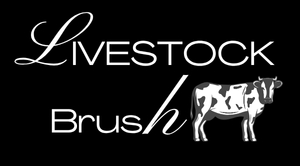Just like people, cows and dogs enjoy a good scratch. In pastures, they often rub against trees or fence posts to relieve itches or remove parasites. Some cows are so persistent that if fences aren’t secure, they’ve even toppled radio towers just to scratch.
But many cows in the U.S. rarely, if ever, roam outdoors. During winter months, they’re confined to barns. So what happens when they have an itch?
In some places — nothing.
But in others, farmers have installed mechanical brushes: motorized, spinning devices covered in soft bristles. When a cow leans into one, it spins into action, helping her groom areas she can’t reach herself. On average, cows use these brushes for about seven minutes a day, rubbing their heads, necks, and backs.
Researchers believe that these brushes have more than one purpose. They may be essential for a cow’s mental and physical health.
“We don’t really know what cows think,” says Marina von Keyserlingk, an animal welfare scientist at the University of British Columbia. “But we do know that they’re highly motivated to use these brushes. What happens if they can’t?”
To find out, von Keyserlingk’s team trained pregnant, indoor cows to push through gates for access to different things: fresh food, open space, or mechanical brushes. The harder a cow pushed, the more valuable the item. Surprisingly, cows worked just as hard to reach a brush as they did for fresh feed.
Their findings, published in Biology Letters, suggest that cows need access to grooming tools.
These brushes can also benefit farmers. They reduce damage from cows scratching on barn structures and appeal to consumers concerned with animal welfare. Grooming not only removes parasites and dead skin — it may also reduce stress, much like how humans unwind at a spa.
Temple Grandin, a renowned animal behavior expert, has observed cows using brushes in ways that suggest more than just relief from itching. “They enjoy it,” she says. “It’s like going to the spa.”
In Denmark, mechanical brushes are required by law in dairy barns. But in the U.S. and Canada, where animal welfare regulations vary by region, adoption remains voluntary — and costs remain a barrier.
Still, von Keyserlingk believes consumer demand and industry standards may drive wider adoption more effectively than legislation. “Science can tell us what’s possible,” she says. “But it’s up to society to decide what to do with that information.”

